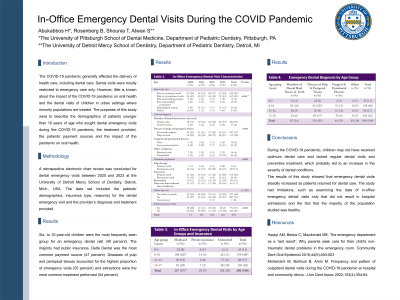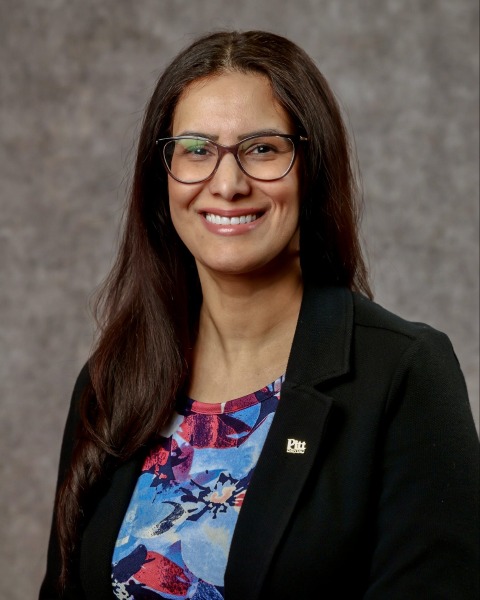Other
282 - In-Office Emergency Dental Visits During the COVID Pandemic


Halima Abukabbos, BDS, MPH, CPH, FRCDC (she/her/hers)
Clinical Assistant Professor & Graduate Program Director
University of Pittsburgh School of Dental Medicine
University of Pittsburgh School of Dental Medicine
Pittsburgh, Pennsylvania, United States
Salwa Atwan, DDS, MS (she/her/hers)
Chief of Pediatric Services
University of Detroit Mercy School of Dentistry, Detroit, MI
University of Detroit Mercy School of Dentistry
Northville, Michigan, United States- BR
Beth Rosenberg, DDS, MS
University of Detroit Mercy School of Dentistry, Detroit, MI
.jpg)
Tarik Shounia, BDS, DDS, MS (he/him/his)
Clinical Associate Professor
University of Detroit Mercy School of Dentistry, Detroit, MI
University of Detroit Mercy School of Dentistry
W Bloomfield, Michigan, United States
Halima Abukabbos, BDS, MPH, CPH, FRCDC (she/her/hers)
Clinical Assistant Professor & Graduate Program Director
University of Pittsburgh School of Dental Medicine
University of Pittsburgh School of Dental Medicine
Pittsburgh, Pennsylvania, United States
Presenting Author(s)
Co-Author(s)
Program Director(s)
Purpose: To describe the demographics of patients younger than 18 years of age who sought dental emergency visits during the COVID-19 pandemic, the treatment provided, the patients’ payment sources and the impact of the pandemic on oral health.
Methods: A retrospective electronic chart review was conducted for dental emergency visits between 2020 and 2023 at the University of Detroit Mercy School of Dentistry, Detroit, Mich., USA. The data set included the patients’ demographics, insurance type, reason(s) for the dental emergency visit and the provider’s diagnosis and treatment provided.
Results: Six- to 10-year-old children were the most frequently seen group for an emergency dental visit (40 percent). The majority had public insurance. Delta Dental was the most common payment source (47 percent). Diseases of pulp and periapical tissues accounted for the highest proportion of emergency visits (55 percent) and extractions were the most common treatment performed (54 percent).
Conclusion: During the COVID-19 pandemic, children may not have received optimum dental care and lacked regular dental visits and preventive treatment, which probably led to an increase in the severity of dental conditions.

.jpg)